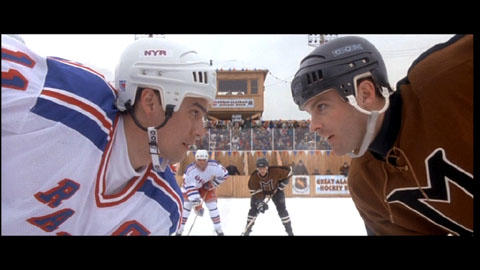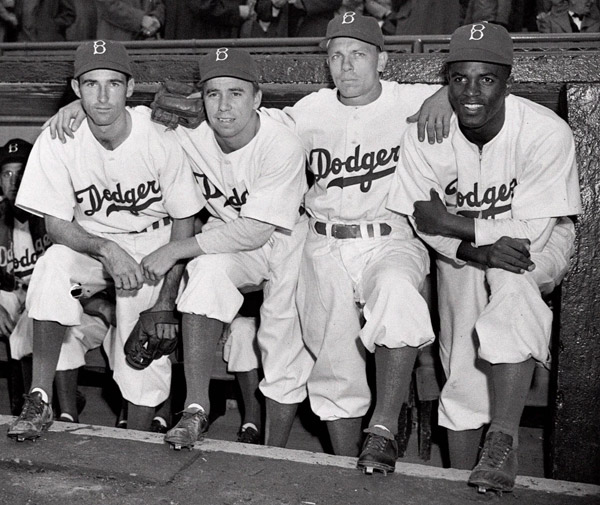

Being inspired by my most recent entry, I’ve decided to list my
top five duet rolls in a movie that have yet to happen and probably never will. Here are the first 2 pairs.
Number 5: Bradley Whitford and Lance Bass
This may come as a surprise to some of my adoring blog fans that this just made it on the list at number 5. I thought it would be higher too. I would pay double to see a movie with these two gents in supporting roles of each other. I could definitely a picture that combines the cinematic genius of
On the Line and the writing magnificence of
The West Wing. Or, even better, these two actors could team up to shoot a remake of the timeless classic,
What’s Eating Gilbert Grape. Mr. Whitford could definitely fill the shoes of Johnny Depp’s selfless character, Gilbert and Mr. Bass was practically born to play the role of Arnie, Gilbert’s little brother, originally portrayed by a budding Leonardo DiCaprio. These are just my thoughts.
Number 4: Benjamin Bratt and Dame Judi Dench
This combination may seem a little bit farfetched but after watching both
Miss Congeniality flicks and
Shakespeare in Love it is easy to see why these two would work great together. Bratt brings his
Law and Order background while Dench has been in all of the modern James Bond flicks. I wouldn’t mind watching another
Law and Order spin-off with these two starring. It could possibly be a show dealing with obscure crimes. He would specialize in catching those who commit crimes of leaving successful TV careers to pursue one in film, while Dench would hunt down proper grammar offenders. She would of course be supported by her cast of other British knights and Dames. Again, this is just one of many possibilities.
Do not fear, my loyal fans, the final three installments are coming soon.
 Of course it’s beautiful and of course it’s sweet, but it can also be so dark. I am talking about the great story of Christi Brown chronicled in My Left Foot. I said before that this plotline has been done many times. Every time I watch a film like this, where a man triumphs over adversity, it makes me happy but it can also get me really depressed. This film was no different. Some scenes were so amazing like when he writes “mother” on the floor of his house. His father then proceeds to parade him over his shoulder into the pub claiming, “My son Christi Brown. Genius.” That is an amazing scene. However just a few scenes later, when Christi is a teenager there is a shot of him on the ground detached from the boys playing soccer. At first I thought this meant that he wasn’t allowed to play. Then he makes an amazing save with his head and proceeds to be kicked furiously by an opposing player. That initial shot is extremely depressing and the save is even more saddening. One would think this is a triumphant scene, but to me it paints a picture of how he wishes he was just like everyone else and he realizes that he never will be. People like Christi Brown deserve admiration, not pity, but I can’t help but feel sorry for him. He has such mental and emotional strength. Why does he deserve to have a physically weaker form? The sad fact is that people usually judge a book by its cover and true beauty, especially in Christi Brown’s case lies deep beneath the surface. It just stinks that most people are unwilling to dig that deep.
Of course it’s beautiful and of course it’s sweet, but it can also be so dark. I am talking about the great story of Christi Brown chronicled in My Left Foot. I said before that this plotline has been done many times. Every time I watch a film like this, where a man triumphs over adversity, it makes me happy but it can also get me really depressed. This film was no different. Some scenes were so amazing like when he writes “mother” on the floor of his house. His father then proceeds to parade him over his shoulder into the pub claiming, “My son Christi Brown. Genius.” That is an amazing scene. However just a few scenes later, when Christi is a teenager there is a shot of him on the ground detached from the boys playing soccer. At first I thought this meant that he wasn’t allowed to play. Then he makes an amazing save with his head and proceeds to be kicked furiously by an opposing player. That initial shot is extremely depressing and the save is even more saddening. One would think this is a triumphant scene, but to me it paints a picture of how he wishes he was just like everyone else and he realizes that he never will be. People like Christi Brown deserve admiration, not pity, but I can’t help but feel sorry for him. He has such mental and emotional strength. Why does he deserve to have a physically weaker form? The sad fact is that people usually judge a book by its cover and true beauty, especially in Christi Brown’s case lies deep beneath the surface. It just stinks that most people are unwilling to dig that deep.



 other characters and the viewer truly gets an insight into his psyche more than that of any other character including the protagonist.
We see Bob as a drunk, a druggie, and a womanizer for the majority of the movie. Basically, the picture that the film paints of Bob is a slacker who has a great plan of going nowhere in life. However, there are many instances in the film that depict Bob as a more compassionate person. His enthusiasm comes out when he enters the drawing contest and wins. We feel his joy, because we hope that this will turn Bob’s life around, but his hopes are shot down by Rosie, the woman who he shoots down many times.
Towards the end of the film, when we realize the fate of Ritchie (at least those of us who have seen the movie once before), we also see that Bob is changing for the better. We find out, during his phone call with Ritchie, who was in Iowa, that Bob was going to go out cruising but he decided to stay back and take care of his baby. Finally, when Ritchie’s death is announced, Bob has the most severe reaction to it. He goes running to his mother and he embraces Rosie. The final shot of the film is of Bob, alone, on the bridge and the last non-diegetic sound we hear is Bob’s voice screaming “Ritchie.” I'm not saying that Bob was to be forgiven for all his faults because of his strong feelings. However, I think Bob gets a bad wrap. He acts in such extreme ways because he feels so much, so strongly not because he is bad person.
other characters and the viewer truly gets an insight into his psyche more than that of any other character including the protagonist.
We see Bob as a drunk, a druggie, and a womanizer for the majority of the movie. Basically, the picture that the film paints of Bob is a slacker who has a great plan of going nowhere in life. However, there are many instances in the film that depict Bob as a more compassionate person. His enthusiasm comes out when he enters the drawing contest and wins. We feel his joy, because we hope that this will turn Bob’s life around, but his hopes are shot down by Rosie, the woman who he shoots down many times.
Towards the end of the film, when we realize the fate of Ritchie (at least those of us who have seen the movie once before), we also see that Bob is changing for the better. We find out, during his phone call with Ritchie, who was in Iowa, that Bob was going to go out cruising but he decided to stay back and take care of his baby. Finally, when Ritchie’s death is announced, Bob has the most severe reaction to it. He goes running to his mother and he embraces Rosie. The final shot of the film is of Bob, alone, on the bridge and the last non-diegetic sound we hear is Bob’s voice screaming “Ritchie.” I'm not saying that Bob was to be forgiven for all his faults because of his strong feelings. However, I think Bob gets a bad wrap. He acts in such extreme ways because he feels so much, so strongly not because he is bad person.





 The Last of the Mohicans is a quality film and is an amazing mix between ruthless, gaudy, overdone action and violence and historical context. If the entire film was based around satisfying those two aspects for the full 117 minutes, then I would be perfectly fine with the film. However, despite the barrage of blood and guts and gore, something did not sit right with me after watching this film. How can a film have both the violence of an action film and the love story of a romantic tragedy? I understand that this started as a novel, but that is no excuse. Although this aspect of the film does draw both men and women to the theatres, it is not a new or innovative storytelling technique. This is the same reason why I didn’t like Titanic. Although I stated previously that I did like some of Titanic, the reason why all of it didn’t sit well with me was because the story tried to incorporate two distinctly different plot lines and make them coexist. If you are going to make a bloody action film, make a bloody action film, like Face/Off. If you want to write a romantic tragedy, write something along the lines of Beaches. However, and this is a huge “however” do not try to combine Face/Off and Beaches. I do not want to see Bette Midler and Nicholas Cage “dance” with each other.
The Last of the Mohicans is a quality film and is an amazing mix between ruthless, gaudy, overdone action and violence and historical context. If the entire film was based around satisfying those two aspects for the full 117 minutes, then I would be perfectly fine with the film. However, despite the barrage of blood and guts and gore, something did not sit right with me after watching this film. How can a film have both the violence of an action film and the love story of a romantic tragedy? I understand that this started as a novel, but that is no excuse. Although this aspect of the film does draw both men and women to the theatres, it is not a new or innovative storytelling technique. This is the same reason why I didn’t like Titanic. Although I stated previously that I did like some of Titanic, the reason why all of it didn’t sit well with me was because the story tried to incorporate two distinctly different plot lines and make them coexist. If you are going to make a bloody action film, make a bloody action film, like Face/Off. If you want to write a romantic tragedy, write something along the lines of Beaches. However, and this is a huge “however” do not try to combine Face/Off and Beaches. I do not want to see Bette Midler and Nicholas Cage “dance” with each other.


